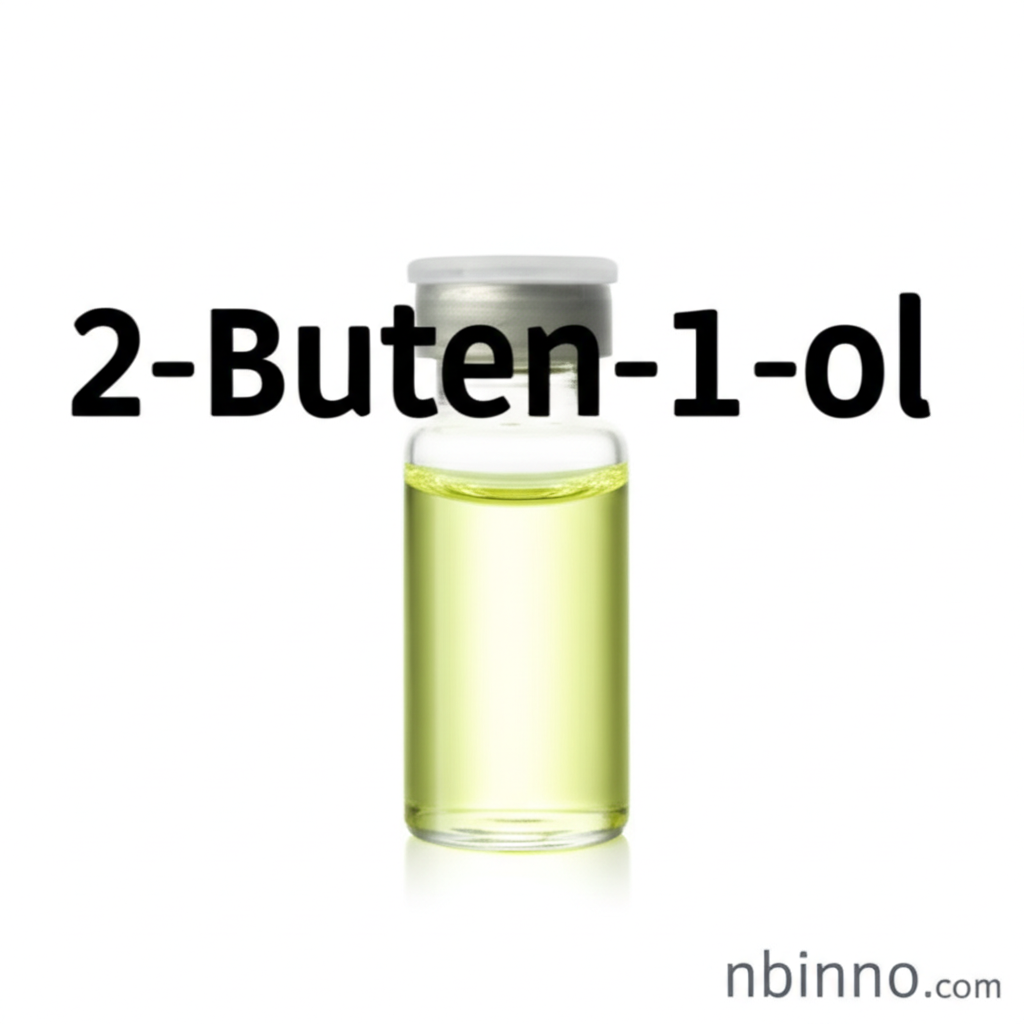Understanding 2-Buten-1-ol (CAS 6117-91-5): Properties, Applications, and Safe Handling for Chemical Synthesis
Explore the essential characteristics and uses of 2-Buten-1-ol, a key intermediate in various chemical processes. Learn about its properties and how it drives innovation in organic synthesis and beyond.
Get a Quote & SampleProduct Core Value

2-Buten-1-ol
As a reliable supplier in China, NINGBO INNO PHARMCHEM CO.,LTD. offers 2-Buten-1-ol (CAS 6117-91-5), a vital compound in the realm of fine chemicals. Its unique molecular structure, featuring a reactive double bond and a hydroxyl group, makes it a sought-after building block for complex organic synthesis. We pride ourselves on providing high-quality chemical intermediates that meet rigorous industry standards, supporting your research and manufacturing needs.
- Unlock advanced synthesis pathways with 2-Buten-1-ol as a key intermediate in organic synthesis, enabling the creation of novel compounds.
- Leverage the reactivity of the double bond in 2-Buten-1-ol for diverse addition reactions, essential for developing new chemical derivatives.
- Benefit from the water and organic solvent solubility of 2-Buten-1-ol, enhancing its versatility in various chemical applications.
- Explore the potential of 2-Buten-1-ol in polymer production, contributing to the development of advanced materials.
Key Advantages
Versatile Reactivity
The presence of a double bond in 2-Buten-1-ol grants it significant reactivity, making it an invaluable component for exploring CAS 6117-91-5 applications in various chemical transformations.
Broad Solubility
Its miscibility with both water and organic solvents enhances the ease of handling and integration of 2-Buten-1-ol into different reaction media, streamlining your chemical processes.
Essential for Organic Synthesis
As a crucial crotyl alcohol synthesis intermediate, this compound plays a pivotal role in constructing complex molecular architectures, supporting innovation in chemical research.
Key Applications
Organic Synthesis
As a versatile building block, 2-Buten-1-ol is integral to numerous organic synthesis pathways, enabling the efficient construction of complex molecules.
Polymerization Processes
The reactive nature of 2-Buten-1-ol makes it a valuable monomer or co-monomer in the creation of specialized polymers with tailored properties.
Fine Chemical Production
This compound serves as a key intermediate in the manufacturing of various fine chemicals, contributing to a wide range of industrial applications.
Research and Development
In R&D settings, 2-Buten-1-ol is frequently utilized for exploring new reaction methodologies and discovering novel chemical entities.
